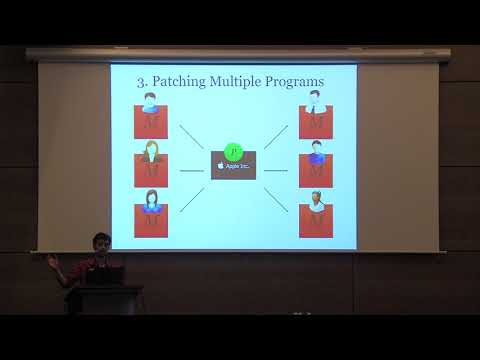Welcome to the resource topic for 2015/1084
Title:
Patchable Indistinguishability Obfuscation: iO for Evolving Software
Authors: Prabhanjan Ananth, Abhishek Jain, Amit Sahai
Abstract:In this work, we introduce patchable indistinguishability obfuscation: our notion adapts the notion of indistinguishability obfuscation (iO) to a very general setting where obfuscated software evolves over time. We model this broadly by considering software patches P as arbitrary Turing Machines that take as input the description of a Turing Machine M, and output a new Turing Machine description M’ = P(M). Thus, a short patch P can cause changes everywhere in the description of M and can even cause the description length of the machine to increase by an arbitrary polynomial amount. We further consider multi-program patchable indistinguishability obfuscation where a patch is applied not just to a single machine M, but to an unbounded set of machines M_1,…, M_n to yield P(M_1),…, P(M_n). We consider both single-program and multi-program patchable indistinguishability obfuscation in a setting where there are an unbounded number of patches that can be adaptively chosen by an adversary. We show that sub-exponentially secure iO for circuits and sub-exponentially secure re-randomizable encryption schemes imply single-program patchable indistinguishability obfuscation; and we show that sub-exponentially secure iO for circuits and sub-exponentially secure DDH imply multi-program patchable indistinguishability obfuscation. At the our heart of results is a new notion of splittable iO that allows us to transform any iO scheme into a patchable one. Finally, we exhibit some simple applications of patchable indistinguishability obfuscation, to demonstrate how these concepts can be applied.
ePrint: https://eprint.iacr.org/2015/1084
Talk: https://www.youtube.com/watch?v=AQGW_qiUkYY
See all topics related to this paper.
Feel free to post resources that are related to this paper below.
Example resources include: implementations, explanation materials, talks, slides, links to previous discussions on other websites.
For more information, see the rules for Resource Topics .
